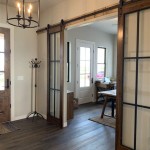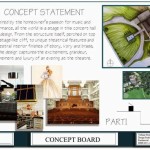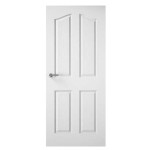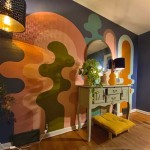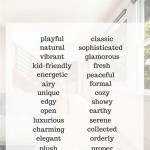What Types of Interior Design Styles Are There?
Interior design is the art and science of enhancing the interior of a building to achieve a more aesthetically pleasing and functional space. It encompasses various aspects, including space planning, furniture selection, lighting design, color schemes, and material finishes. There are numerous interior design styles, each with its unique characteristics and aesthetic appeal. Understanding the different styles can help individuals choose the best fit for their personal preferences and lifestyle.
Traditional Style
Traditional interior design is characterized by its elegance, formality, and timeless appeal. This style often features rich colors, ornate furniture, and decorative accents such as molding, wallpaper, and drapery. Key elements include:
- Color Palette: Deep jewel tones, such as emerald green, sapphire blue, and burgundy red, are frequently used.
- Furniture: Traditional furniture styles, such as Chesterfield sofas, wingback chairs, and antique pieces, are common.
- Materials: Wood, leather, and velvet are popular materials used in traditional interiors. Ornate carvings and intricate details are often incorporated.
- Lighting: Chandeliers, sconces, and table lamps with classic designs are essential elements.
Modern Style
Modern interior design emphasizes simplicity, functionality, and clean lines. This style strives to create a minimalist aesthetic with a focus on functionality and open spaces. Key elements include:
- Color Palette: Neutral colors, such as white, gray, and black, are dominant in modern interiors. Bold accents, such as pops of bright colors, are sometimes incorporated.
- Furniture: Modern furniture, often characterized by sleek lines and geometric shapes, is used to enhance the minimalist look.
- Materials: Modern interiors often utilize materials such as metal, glass, and concrete. Natural materials like wood may also be incorporated.
- Lighting: Modern lighting fixtures, such as pendant lights, track lighting, and recessed lighting, are used to provide both functional and decorative illumination.
Contemporary Style
Contemporary interior design is a broader category that encompasses modern elements while embracing current trends and influences. This style is characterized by a focus on comfort, functionality, and a clean, streamlined aesthetic. Key elements include:
- Color Palette: Neutral colors are often used, but contemporary interiors may also incorporate bolder hues and patterns.
- Furniture: Contemporary furniture is often comfortable and functional, featuring clean lines and modern materials.
- Materials: Natural materials like wood, leather, and stone are often combined with man-made materials such as metal and glass.
- Lighting: Modern lighting fixtures are common, but there is more flexibility in the style and design of lighting choices.
Mid-Century Modern Style
Mid-century modern design emerged in the mid-20th century and has experienced a resurgence in popularity. This style is characterized by its simple forms, functional design, and use of natural materials. Key elements include:
- Color Palette: Mid-century modern interiors often feature warm colors like beige, yellow, and orange, as well as bolder accents like teal, turquoise, and mustard.
- Furniture: Iconic mid-century modern furniture pieces, such as Eames chairs, Saarinen tables, and Noguchi lamps, are popular choices.
- Materials: Natural materials, including wood, leather, and woven textiles, are prominent, along with materials such as molded plastic and metal.
- Lighting: Mid-century modern lighting features geometric shapes and often incorporates brass accents.
Industrial Style
Industrial interior design draws inspiration from industrial spaces, such as factories and warehouses. This style embraces raw materials, exposed elements, and a minimalist aesthetic. Key elements include:
- Color Palette: Industrial interiors often feature a muted color palette, with grays, blacks, and browns being dominant.
- Furniture: Industrial furniture is characterized by its rugged, reclaimed, or vintage style.
- Materials: Metal, brick, wood, and concrete are prominent materials used in industrial interiors. Exposed ductwork, pipes, and beams add to the industrial aesthetic.
- Lighting: Industrial lighting often features exposed bulbs, metal fixtures, and vintage-style lamps.
Scandinavian Style
Scandinavian interior design is known for its simplicity, functionality, and natural elements. This style prioritizes light, airy spaces and a focus on comfort and well-being. Key elements include:
- Color Palette: Scandinavian interiors often feature a neutral color palette, with white, gray, and beige being dominant. Natural wood tones, such as birch and pine, are also frequently used.
- Furniture: Scandinavian furniture is characterized by its clean lines, simple forms, and use of natural materials.
- Materials: Wood, leather, wool, and cotton are common materials used in Scandinavian interiors.
- Lighting: Scandinavian lighting is often soft and diffused, with a focus on natural light. Pendants, lamps, and sconces with simple designs are favored.
These are just a few of the many interior design styles that exist. Each style offers its own unique aesthetic and benefits. By understanding the different styles, individuals can choose the one that best suits their personal taste and lifestyle. Ultimately, the best interior design style is one that creates a comfortable, functional, and aesthetically pleasing space for its occupants.

Interior Design Styles Designteacher

Decorating Styles 101 Find The Interior Design You Love House Principles Styling

Types Of Interior Design Styles Zad Interiors

How To Choose An Apt Design Style For Your House

Diffe Interior Design Styles Types Of Home Décor

What S Your Design Style Home Interior Styles Quiz Decor

Decorating Styles 101 Find The Interior Design You Love

7 Most Popular Types Of Interior Design Styles In 2024 Beautiful Homes

21 Most Popular Types Of Interior Design Styles In 2024 Foyr

Types Of Interior Design Styles Modern Minimalist Eps
Related Posts

